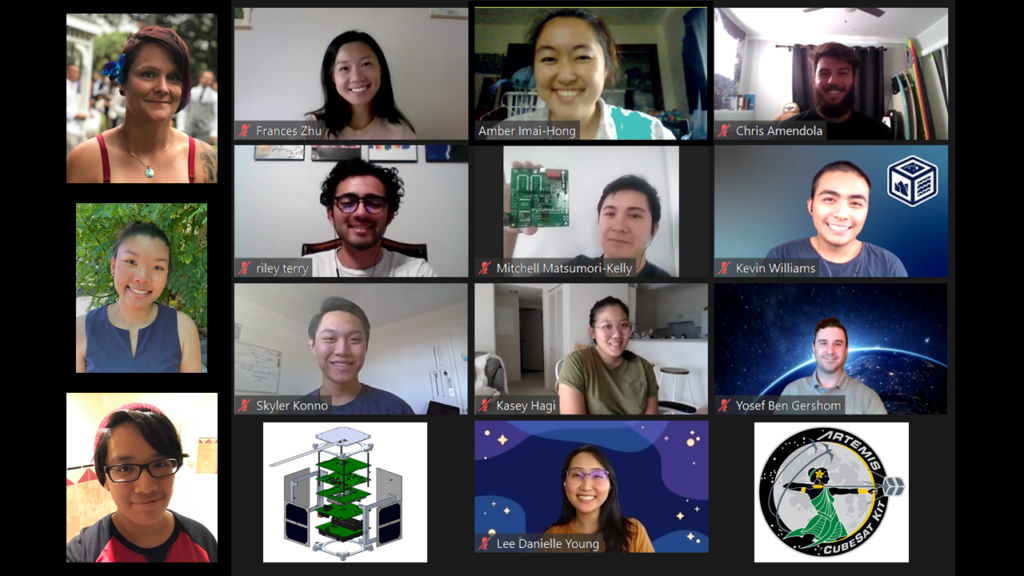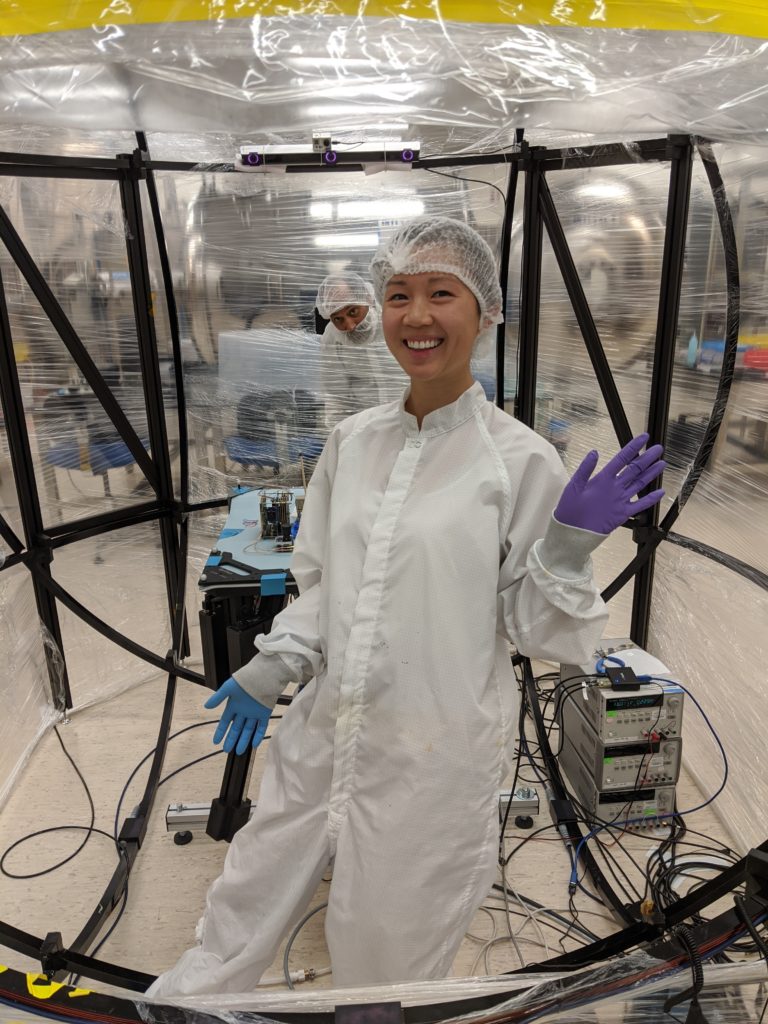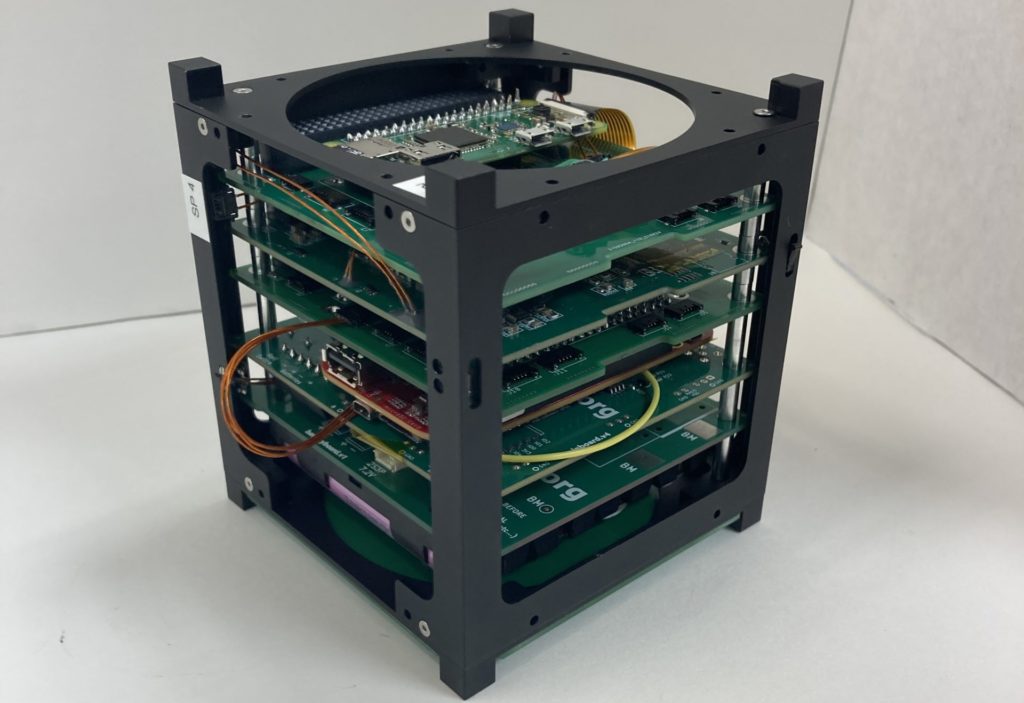Making Small Satellites Affordable and Accessible
When President John F. Kennedy gave his famous, “We choose to go to the Moon” speech in 1962, it helped to inspire a new generation of space explorers that culminated in the National Aeronautics and Space Administration (NASA) successfully landing the first man on the moon with Project Apollo in 1969.
Currently, the United States is planning for a series of return missions to the Moon beginning in 2024. With goals set to land the first woman and the next man on the lunar surface, NASA aptly named its new program after Artemis, the twin sister of Apollo.
To capitalize on the momentum generated by its groundbreaking program, NASA created the Artemis Student Challenges to build foundational knowledge and introduce students to topics and technologies critical to the success of Artemis. Through the program, NASA hopes to inspire the next generation of engineers, scientists and thinkers to become the “steely eyed missile men and women” that will enable humankind to take the next giant leap–sending astronauts to Mars.
Under this bold new initiative, NASA awarded $2.4 million to six space grant universities last year, including a $500,000 award to the University of Hawai‘i at Mānoa (UH Mānoa) for its Artemis CubeSat proposal, which called for the development of a CubeSat kit that would check off many boxes on an impressive list of space flight goals, including:

• Undergraduate design and development
• Reducing the cost of space flight
• Development of an online course to supplement hands-on learning
• Outreach to states that have not flown satellites
• Establishment of a potential testbed for new aerospace technologies developed in Hawai‘i
On point for the project is the Hawai‘i Space Flight Laboratory (HSFL), a multidisciplinary research and education center at UH Mānoa’s Hawai‘i Institute of Geophysics and Planetology (HIGP) that brings together individuals from diverse backgrounds to work on the exploration and understanding of the space environment. Through HSFL and the Hawai‘i Space Grant Consortium (HSGC), students throughout the University of Hawai‘i’s ten-campus system are able to design, build, launch and operate microsatellites in the 1-150 kg range that can be configured for a variety of science and educational tasks.
The principal investigator of the Artemis CubeSat project is HSFL’s newest faculty member, Assistant Research Professor Frances Zhu, who joined HIGP in 2019. Zhu received her Bachelor of Science in mechanical engineering and PhD in aerospace engineering from Cornell University in 2014 and 2019, respectively. Her belief in science literacy and educational accessibility, combined with HSFLs expertise in small satellites, was a motivating factor in applying for the grant.

“Our goal was to create a foundational enabler in the form of a low-cost CubeSat kit and to develop an undergraduate course that transitions into an online course in the public domain,” said Zhu, who also serves as deputy director of HSGC. “We are proving that CubeSats are absolutely within the realm of undergraduate education with development of a kit that contains all subsystems of a fully functioning small satellite, with a target cost of less than $5,000.”
Traditionally, the lowest priced CubeSats run in the $500,000 range, placing it virtually out of reach for most high school and college aerospace programs. Cognizant of the need to balance cost with the necessary functions, the avionics, software and mechanical student teams carefully selected low-cost computer boards like Raspberry Pi Zero, BeagleBone Black and PyCubed; and often redesigned various components, such as solar panels, power distribution units, antenna and the payload, to fit their exacting requirements.
The general capabilities of the standard unit satellite, known as a 1U CubeSat, include onboard computing, radio communication, rudimentary dynamic sensors, a basic infrared camera and an electrical power system. Electrical and digital interfaces are designed to easily connect with the CubeSat Kit Bus for the altitude control system, additional science payloads or propulsion components.
The kit, which includes access to a standardized aerospace design program complete with online support, has been publicized to states that have not launched a small satellite under NASA’s CubeSat Launch Initiative. The next phase of the program, already in progress, is focusing on the development of a classroom and online spacecraft mission design course utilizing the kit.
“The kit was not developed and designed solely for space flight,” Amber Imai-Hong, HSFL outreach and engineer specialist. “It can be used as a tabletop sensor suite, avionics for a sounding rocket, payload balloon for a suborbital mission, sensor pack for a rover and more.”
This flexibility allows HSFL to develop and test new technologies from its undergraduates.
“As a Native Hawaiian and lifelong Hawai‘i resident, it is so important to diversify our economy and bring high paying jobs that are ecologically sustainable,” added Imai-Hong. “By creating this foundation enabler, we can build a homegrown aerospace workforce in Hawai‘i.”

